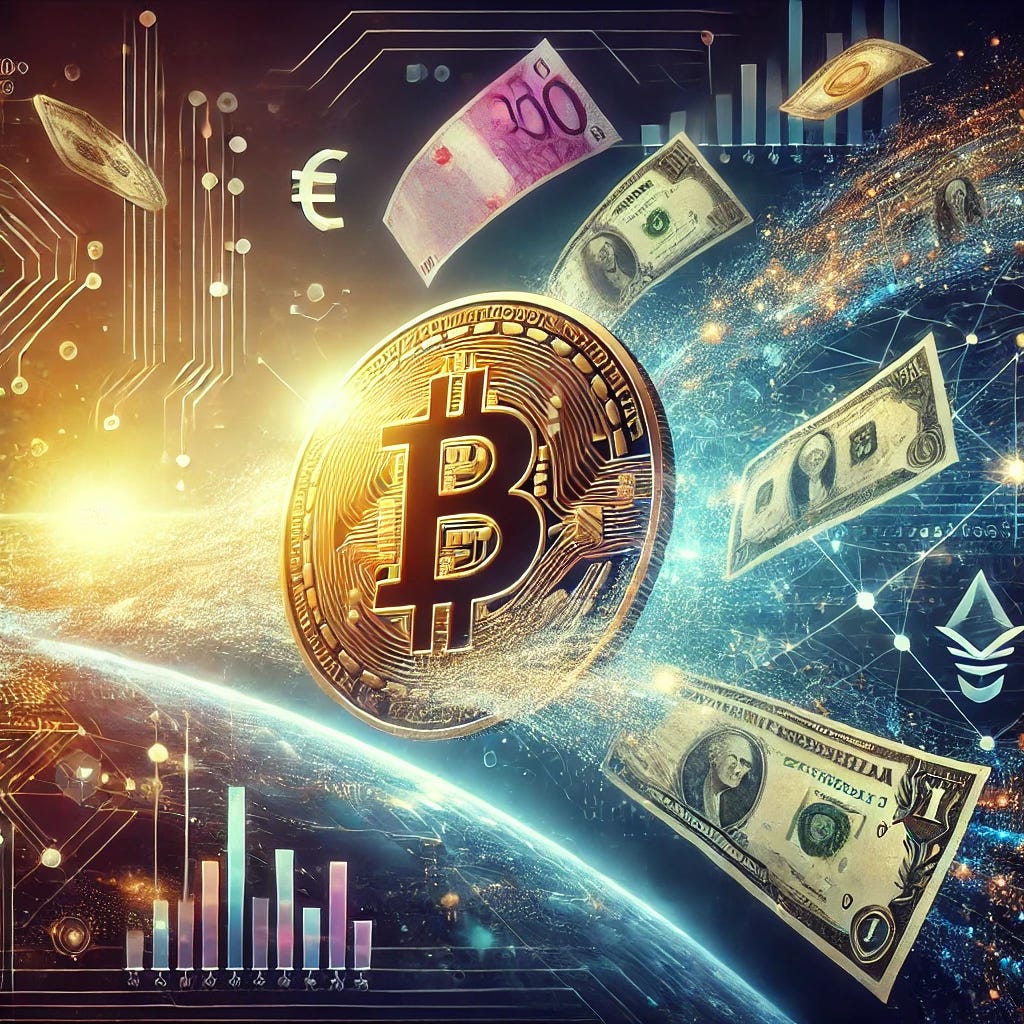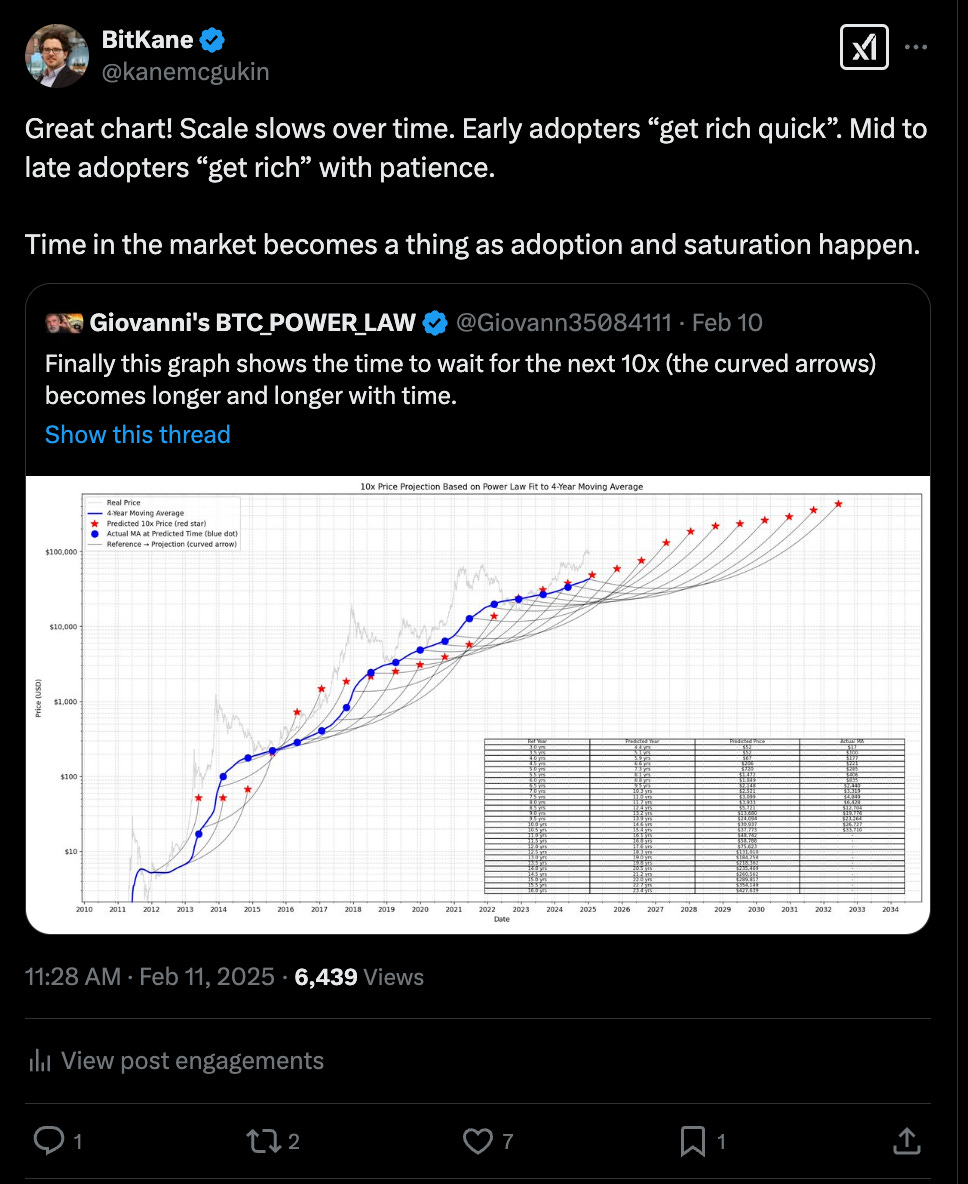Bitcoin, AI, and the True Nature of Money
Understanding the Difference Between Wealth, Money, and Currency
In our rapidly evolving world, it’s easy to get caught up in use case, adoption, and infrastructure debates about Bitcoin, AI, and financial technology. Take the Lightning Network, for example. Some believe it will enable AI-driven payments, accelerating Bitcoin’s path to becoming a global reserve asset in our digital economy.
But at the core of all of this lies a deeper, more fundamental question, one that most people still don’t fully understand:
👉 What is money? What is currency? And how does wealth fit into all of this?
These words are used interchangeably, but they are not the same—and the failure to distinguish between them leads to misguided narratives, even within Bitcoin circles.
1. Does the World Really Need to Pay for Everything in Bitcoin?
One of the biggest debates surrounding Bitcoin adoption is whether businesses truly need to accept Bitcoin or Lightning payments, or whether simply converting fiat into Bitcoin is enough.
Why can’t a small business just take USD (fiat) and immediately buy BTC?
Why does AI need irreversible Bitcoin Lightning payments instead of using Visa’s network that allows for reversible payments?
These are valid questions. Not about picking sides but to me it’s about understanding how commerce works. While our money is broken, there are legitimate cases where reversing a payment is necessary.
Upgrading our payment rails is a nice-to-have, but does that mean Bitcoin needs to be a currency too?
Bitcoin is already fulfilling its role as a savings mechanism exceptionally well. Meanwhile, fiat continues to function as a currency—or an effective Layer 2 for Bitcoin. Do we really need Bitcoin for payments, or is its real value in preserving purchasing power across time?
The Bitcoin Lightning Bull Case:
Bitcoin Lightning advocates argue that:
1️⃣ AI needs crypto payments to avoid fraud – A Visa card can be hacked, reversed, or stolen, whereas a Bitcoin payment is final, secure, and cannot be manipulated. What if AI payments get hacked like our bank accounts or Crypto Bridges do today? Who will replace those stolen funds?
2️⃣ Math-based money is better for long-term contracts – if an AI system is executing a seven-year settlement, it needs to be denominated in a scarce, non-inflationary currency like Bitcoin, rather than fiat.
This shift wouldn’t just improve contract reliability—it would also reduce shadow banking and financial grift, the very forces that fuel bubbles and systemic collapses.
With on-chain and real-time lending data, we’d see fewer unexpected blowups, as financial risks would be more transparent and priced into the system before they spiral out of control.
These points make sense, but the larger issue is still being overlooked: Are we confusing the function of money with the function of currency?
2. The Confusion Between Money, Wealth, and Currency
The real problem is that most people don’t actually understand what money is—or how it differs from currency and wealth.
Even in hardcore Bitcoin circles, this lack of understanding is becoming apparent.
Money ≠ Currency
Currency ≠ Wealth
Wealth ≠ Money
But people throw these words around as if they are interchangeable. They are not.
Here’s the difference:
💰 Money = A store of value across time. Historically, gold and real estate have been the best forms of money. They retain purchasing power but are not instantly liquid. Bitcoin is the first to store value AND be instantaneously liquid.
💵 Currency = A short-term medium of exchange. Currency is man-made, designed to facilitate transactions. They promote grift and always go to zero or change over time (fiat, stocks, baseball cards, clipped coins).
🏛️ Wealth = The underlying principles and value systems that allow civilization to move forward. If money is lost, wealth can still rebuild it. If wealth is destroyed, progress stops entirely.
The Hierarchy of Financial Collapse
Understanding this hierarchy is critical when thinking about financial stability:
1️⃣ If currency is destroyed, human progression is temporarily stalled. But because money and wealth still exist, recovery happens quickly. Traditionally, currencies have been units that are easily traded and carried quickly. They tend to change every 70-100 years and vary based on region.
2️⃣ If money is destroyed, wealth still exists, but human progression slows dramatically. Natural disasters, lost gold, art or broken tools. Man figures out ways to begin again, but it takes time.
3️⃣ If wealth is destroyed, human progression stops. Society collapses because the fundamental principles of progress are lost. The systems that govern trust, trade, and value exchange underpin how we interact with one another. When these are broken, the result is a collapse that is difficult, if not impossible, to recover from.
Look at warring cultures throughout history. Their internal conflicts, destruction of wealth, and loss of societal order have often led to centuries of stagnation or regression. When the mechanisms of cooperation and value preservation fail, so does the ability to build a future.
3. Bitcoin Is the First Asset That Functions as Both Money and Currency
Bitcoin changes this entire equation because, for the first time in history, an asset exists that can function both as money and currency simultaneously. When referencing currency, I’m not talking about speed and volume, but rather the ability to convert much quicker than other monies.
📌 Bitcoin acts like gold (money)—it stores value across time and is scarce.
📌 Bitcoin acts like fiat (currency)—it is fungible and can be instantly converted into any widely accepted currency when needed.
You don’t need to use Bitcoin as a payment method to benefit from its ability to store value.
The real issue in our current financial system isn’t just payments—it’s the destruction of savings and purchasing power for a large part of global participants, especially retail.
👉 When money fails to store value, people are forced into endless risk-taking, speculation, and debt just to maintain their standard of living. Bitcoin fixes this by providing a stable, incorruptible foundation for wealth preservation, something fiat-based systems actively erode.
Bitcoin is simultaneously the best store of value AND the best liquidity layer because you can instantly sell a fraction for fiat whenever necessary. We’ve never been able to do this with store of value assets.
This doesn’t require Lightning. It doesn’t require AI (AI will be accretive though). It just requires an offramp to fiat currency, which already exists, save for Elizabeth Warren and her team of cronies!!
4. Where My Thinking Has Shifted: Fiat as the Ultimate Layer 2
The biggest realization?
🔥 Fiat currency, while fundamentally flawed due to debasement, is ironically the most effective Layer 2 we have today. It may not store value, but it is universally accepted and highly liquid, making it the ideal medium for commerce and real-time exchange.
We rightfully criticize USDs inability to preserve purchasing power, its role as an efficient exchange mechanism enables global trade, business innovation, and financial velocity. All of which are necessary for economic growth.
Bitcoin solves the store-of-value problem, while fiat—at least for now—remains the practical Layer 2 for spending and transactions.
Why?
Because Bitcoin allows you to store wealth across time, and fiat allows you to spend it seamlessly whenever necessary. Patience, time, and innovation will take care of the rest.
⚡ Instead of using Bitcoin for every transaction, you hold it as savings and convert small amounts to fiat as needed.
⚡ This is already how people use real estate and gold—they don’t use them for daily payments because it’s unnecessary, but they store their wealth in them.
⚡ Lightning is great, but is it necessary for Bitcoin to function as the world’s primary store of value?
5. The Bigger Picture: Why This Matters Now
The world is speeding up, and we are losing sight of these distinctions at an increasing rate.
People don’t understand the difference between money, currency, and wealth.
This confusion is leading to misguided narratives about Bitcoin’s role.
The financial system is shifting in a way that will require people to relearn these principles.
💡 This is why Trump’s recent financial signals are important.
💡 This is why AI, Lightning, and other innovations are being debated.
💡 And this is why the timing of all of these forces converging is not a coincidence.
Final Thoughts: Bitcoin’s Role in the Future of Money
Bitcoin is the first asset in history that functions as both money and currency. But that doesn’t mean it has to replace all currency transactions.
🔥 The best use of Bitcoin is as a long-term store of value.
🔥 Fiat still functions as an effective short-term spending mechanism.
🔥 Lightning and AI may be useful innovations, but they are not required for Bitcoin’s success.
The more we understand the difference between wealth, money, and currency, the clearer the Bitcoin thesis becomes.
👉 Wealth = The foundational principles of human progress.
👉 Money = The long-term store of purchasing power.
👉 Currency = The least valuable tool we use for short-term transactions.
If we lose currency, we can rebuild quickly.
If we lose money, we can still start over.
If we lose wealth, society collapses.
Bitcoin preserves money and wealth simultaneously, and that is its greatest strength. The question isn’t whether the world needs Bitcoin payments. The question is whether the world understands Bitcoin’s value.
🚀 If this article resonated with you, share it with someone who needs to understand the real difference between money, wealth, and currency.
Bitcoin is more than just digital gold or a payment system. It is the bridge between the past and the future of finance.







This seems to have a very US/Western focus on fiat currency. For people in these regions of the world, fiat works well as a medium of exchange due to the ease of access to bank accounts. However, in other parts of the world, where people are unable to access USD or are entirely bankless, Bitcoin and Lightning are better than traditional fiat payment rails due to their lack of barriers to on-boarding.
Alex Gladstein of the Human Rights Foundation has talked extensively about how activists working in authoritarian regimes prefer donations in bitcoin compared to fiat as it cannot be stopped by governments and provides more privacy, especially when using lightning.
https://bitcoinmagazine.com/culture/currency-of-last-resort
Overall, I really liked your point on how bitcoin acts as both money and currency, but I think you are painting an incomplete picture of the current fiat payment system by not talking about the drawbacks it has as a medium of exchange.
Perfectly stated, Kane, as your analysis is based on the functional reality at the moment. Of course things will change over time, but USD and existing payment systems aren't going away for awhile. Well written!